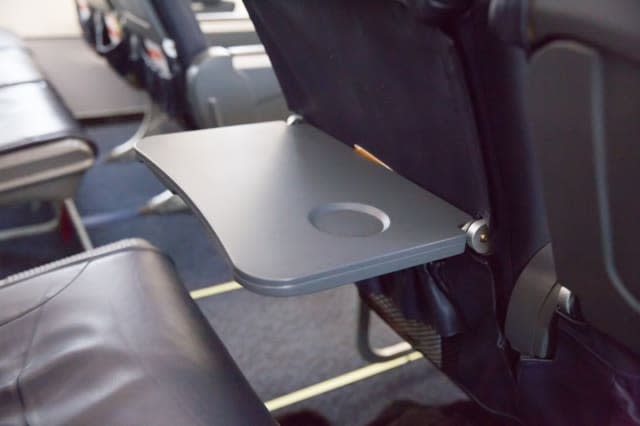What are the dirtiest places on a plane?

Did you know that more than one if five people who travel on planes suffer from a cold or the flu after the flight?
Microbiologists have tested planes and found that germs are commonplace, and can survive for hours or days after the passenger who brought them on board has departed.
See also: Revealed! Why plane windows have tiny holes in them
See also: Why do they dim lights during takeoff and landing on a plane?
But which areas of a plane are best avoided? According to Skyscanner, the top four dirtiest parts of the plane are (drum roll, please): Tray tables, overhead air vents, toilet flush buttons, and seatbelt buckles.
Some of the 200 or so viruses that can cause the common cold can infect people for up to 18 hours after they have left the body, and flu viruses can infect people for up to eight hours after being let loose.
As well as causing the common cold and influenza, these bugs and viruses can cause everything from skin diseases and upset stomachs. Studies have found MRSA and E. Coli can live on the plane for over a week. Ewww.
How germs and bacterias spread on planes
Modern planes typically use a combination of fresh and recirculated air. When the aircraft is parked at the gate, auxiliary power units generally provide ventilation rather than the aircraft's own system. This helps germs to spread through the cabin more easily.
Another culprit could be the low relative humidity of cabin air. The typical relative humidity on planes is around 11 per cent. According to Skyscanner, some research suggests that low humidity interrupts the Mucociliary Clearance System, which consists of a thin layer of mucus and tiny hairs in the nose. This protective system traps viruses and bacteria and moves them from the nose to the throat, where they are swallowed and destroyed by acid in the stomach.
Because this system no longer works properly, bacteria and viruses get easier access to your lungs.
Either way, you run the risk of becoming sick on an flight from directly inhaling particles in the air from someone's coughing or sneezing. You can also become sick if you touch an infected surface and then touch your eyes, mouth or nasal passages.
The longer you are exposed to these things the more chance you have of getting ill. So, theoretically at least, you are less likely to get sick on shorter flights than long haul flights.
How to stay healthy while flying
There are no iron-clad ways to prevent getting ill after a flight. But you can try and avoid picking up an illness by touch your eyes, mouth or the inside of your nose as little as possible.
This is tough to do, so make sure your hands are clean. Wash your hands well with soap and water, and frequently apply a hand sanitiser gel containing at least 60 per cent alcohol. The latter kills bacteria and is effective against some viruses.
Also, wipe down as many surfaces as you can with the gel or antibacterial wipes too, such as the remote control, tray table, video monitor screen and other surfaces known to have high levels of bacteria.
Try not to touch places that are accessible to a lot of people, like the top edges of aisle seats, door handles, or bathroom mechanisms. If you do, use the hand sanitiser.
Remember to wash your hands before a meal and as soon as you can after your flight.
Related video:




